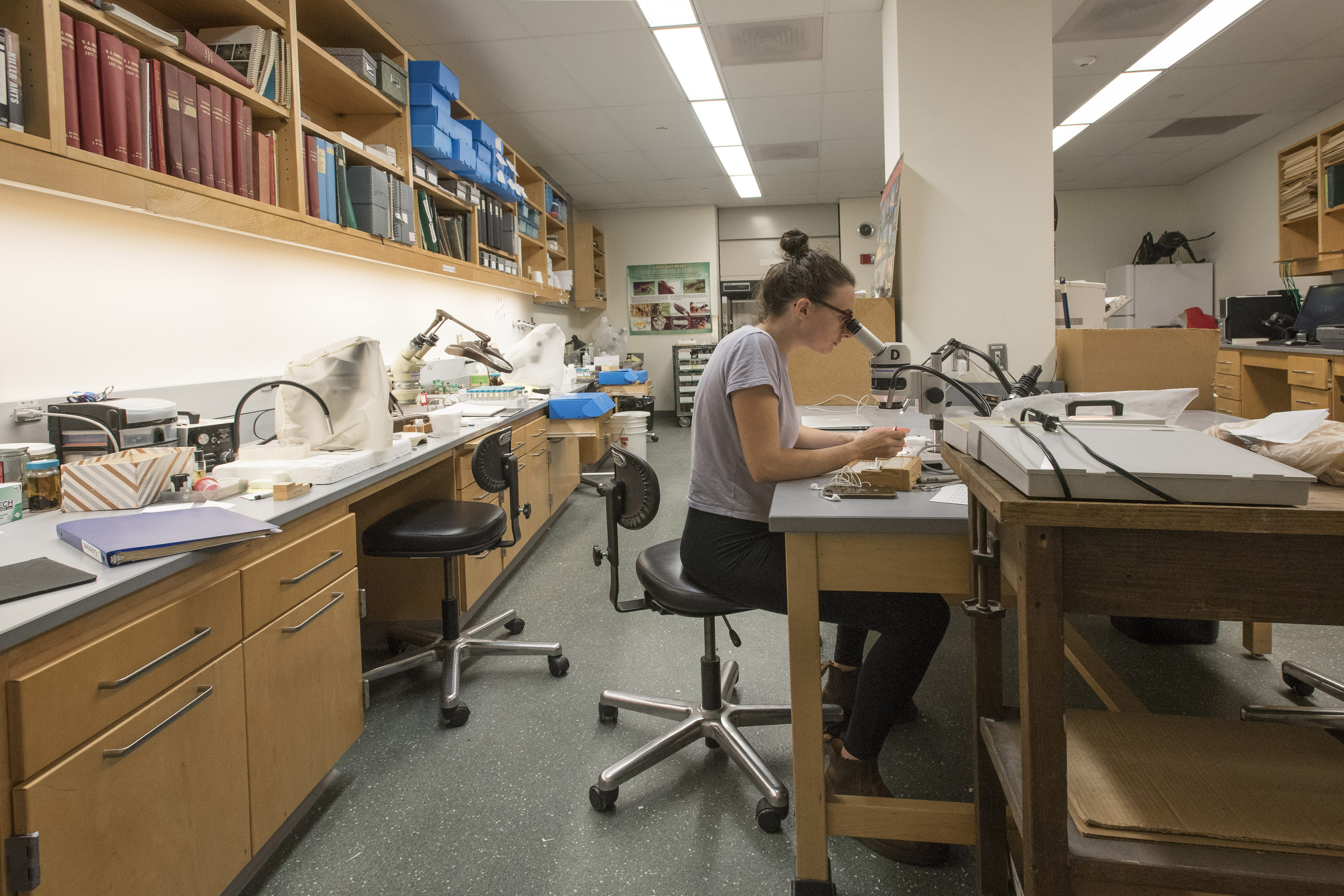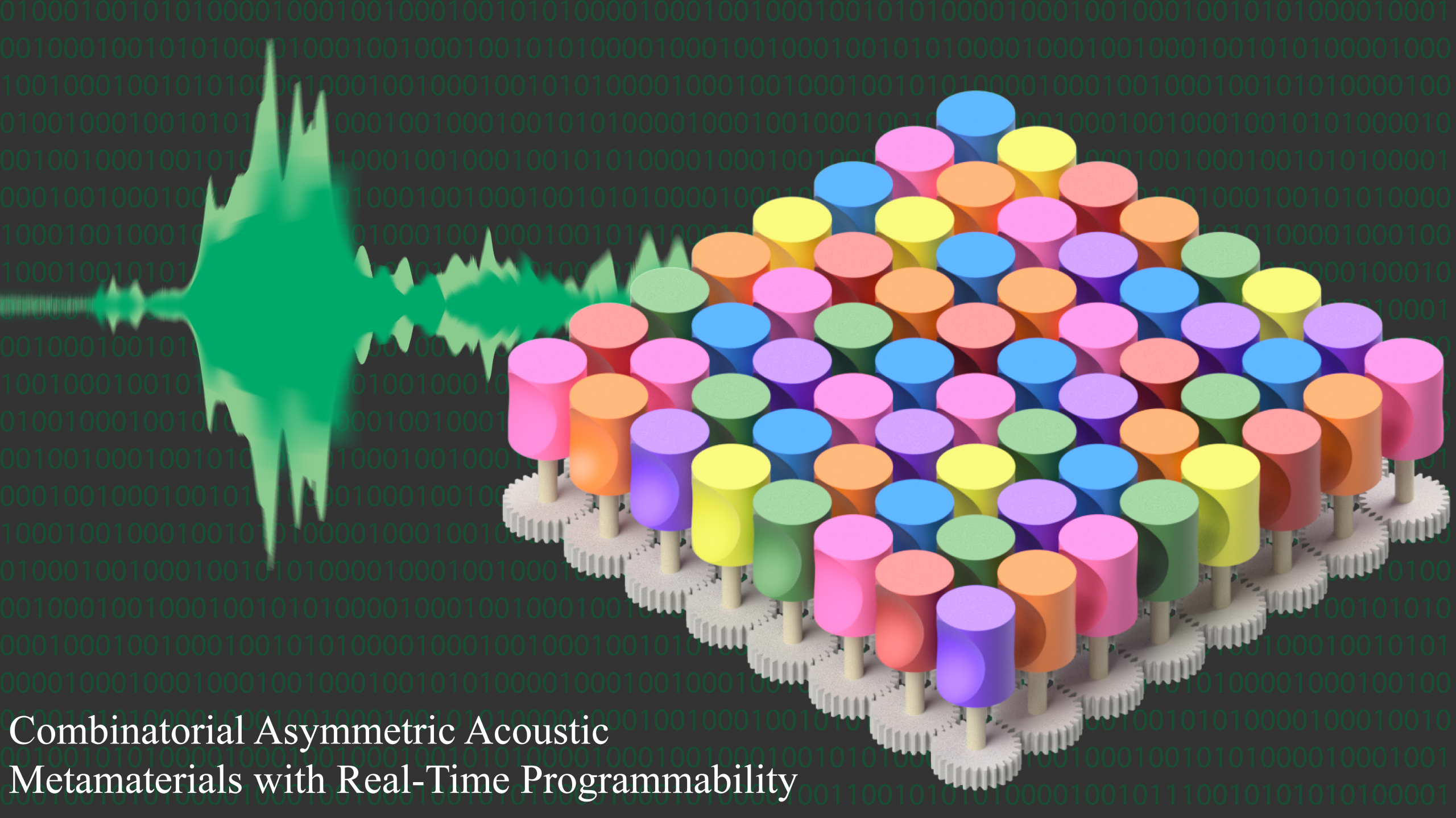Tucked away in the Biology and Physics building at the heart of the Storrs campus, tray upon tray of carefully preserved creatures wait to tell their stories. These curiosities belong to UConn’s Biodiversity Research Collections, where scientists, like detectives, are discovering novel information about the world today, even from specimens collected decades – or centuries – ago, including fossils dating back 400 million years.
In the future, a lot of research will have to be done in collections because those species will no longer exist in the wild. — Jane O'Donnell
“We have close to a million specimens in here,” says Jane O’Donnell, manager of Invertebrate Scientific Collections in the Biodiversity Research Collection, part of the Department of Ecology and Evolutionary Biology. Many of these specimens have proven invaluable over the years, providing necessary data for hundreds of research papers. In 2016 alone, specimens from the UConn collections served research studies presented in more than 20 publications.
To many, the term ‘collections’ conjures up displays of dusty taxidermy specimens and rows of insects impaled on pins with tiny handwritten labels. But there is nothing old-fashioned about how collections are used in some of the latest STEM research.

O’Donnell says collections are not only a vital part of STEM education, but they also make many research studies possible at a time when species diversity is decreasing rapidly worldwide.
“In the future, a lot of research will have to be done in collections because those species will no longer exist in the wild,” says O’Donnell, “and we have to be clever enough to understand the story that each of these specimens is telling us.”
Collections have proven their usefulness in diverse roles. From investigating plane crashes caused by birds to determining the cause of the Irish Potato Famine of the 19th century. Collections have even been used to detect the Lyme disease bacterium in ticks collected decades before the first documented case of Lyme disease in humans.
Recently, UConn graduate student Veronica Bueno and postdoctoral fellow Kevin Burgio ’17 (CLAS) were co-authors of a paper on parasite biodiversity and extinction, showing that one-third of parasites may become extinct by 2070. For their research, they relied entirely on records preserved in institutions from around the world.
Burgio anticipates that his life’s work will revolve around specimens-based research. He says he and his collaborators are currently the only people he knows of who are actively studying the Carolina Parakeet – a species whose last known captive individual died in 1918 – in depth.
In another recent UConn study, researchers in associate professor Chris Elphick’s lab studied differences in breeding strategies and molt timing in two closely related species of tidal marsh sparrows. They were able to increase the sample size obtained in the wild by examining the feathers of specimens in natural history collections at UConn and other institutions.
And earlier this year, a research group led by UConn professor and director of the Biodiversity Research Collections Bernard Goffinet published work investigating more than 900 lichen samples from UConn and other collections worldwide. Analysis of DNA sequences from these specimens revealed an expansive and previously unrealized diversity of lichen-forming fungal species and their symbiotic partners.
Providing access
With huge amounts of data and so many researchers relying on it, extensive efforts are underway to digitize collections to make this information available to anyone wishing to access it. This is no small undertaking.
For any institution, the digitization process can be like building a house of cards if care isn’t taken, says O’Donnell. It is essential that the data are recorded accurately so they will be correct when accessed down the line. Great care is taken in digitizing the UConn collections to ensure that good data are going in, with researchers, collection managers, and students working together to complete the task for as many specimens as possible.
O’Donnell also emphasizes the importance of being able to go back to the original specimen if needed, to ensure the accuracy of the data being stored and shared. Whole specimens may also be loaned to researchers at other universities, saving them a trip to the field, or sometimes as a substitute for field research where those habitats no longer exist.
Just as a library will loan out books, collections loan out specimens. UConn is preparing to send some slugs specimens to researchers at the University of Montreal who are studying invasive slugs in North America. Other research groups worldwide studying army ants have been able to access specimens from the University’s extensive ant collections. Recently, Christopher Martine, a UConn ecology and evolutionary biology alum now at Bucknell University, and his colleagues from the University of California-Berkeley used samples from UConn’s collections to describe a new species of tomato from Australia in a study they published last year.
Vital Time Capsules
Just maintaining the collections is a daunting task. Hundreds of thousands of bottles of continuously evaporating ethanol need to be refilled eventually, and constant monitoring is required to control the climate and lighting conditions that are necessary to ensure the preservation of specimens.
Security is also important. Many of the UConn specimens, for example, are highly valuable because they have a lifetime of experience and skill behind the information that’s stored with them.
Unfortunately, however, Natural History Collections and Museums aren’t always referenced in publications and often don’t get the recognition they deserve.
Perhaps due in part to these omissions, funding and appreciation for the collection enterprise is growing scarcer, with some universities being forced to abandon their collections. This is a troubling trend because in addition to the research value held in these collections, they also enrich the education of the students, says O’Donnell. Their absences surely will be felt.
Another problem facing the future of collections is that fewer and fewer researchers have the critical expertise to staff even existing collections. In-depth training is needed to spot sometimes very subtle and easily missed traits that distinguished closely related species apart, and unfortunately, taxonomists well-versed in the science and art of classifying specimens accurately are retiring faster than new taxonomists are being trained.
“At a time when funding for these collections seems to be disappearing, it’s important to remember how valuable they are and how much we can learn from them,” says Bueno, who is deploying her skills in taxonomy to deposit new parasites in the UConn collections as she completes her dissertation work.
To ensure that natural history collections remain available for generations to come, it is important to recognize them as the keepers of vital time capsules in a world that is rapidly changing. As these specimens have their stories told, UConn will play an important role in the preservation of this global and regional natural heritage.
UConn is home to the extensive Carl and Marian Rettenmeyer Army Ant Guest Collection, which is currently on display along with a variety of multimedia and activities to engage the community.



